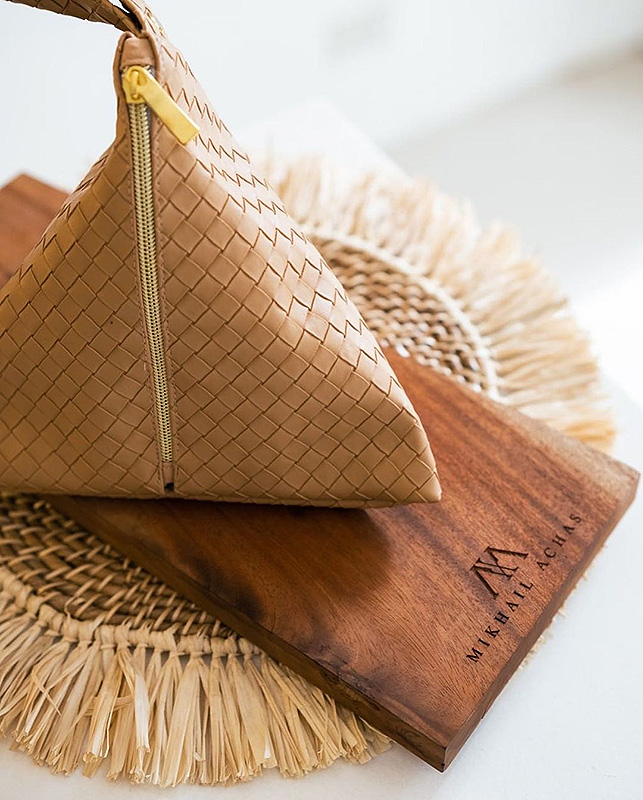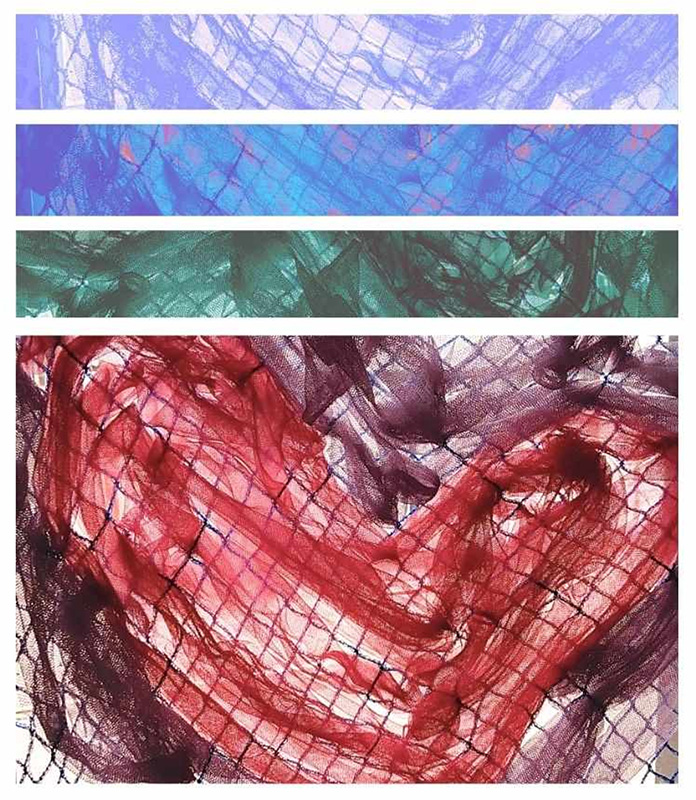
Pusô in the Work of Mikhail Achas
by Sam Mendez
Most Cebuanos were first introduced to the works of Mikhail Achas through his line of designer bags resembling a pusô, the traditional Visayan hanging rice. To the unfamiliar, the accessory looks like any luxurious bag, just in an exotic new geometry; but to those from this part of the archipelago, the crisscross pattern of its weave transforms the material from plain fabric into palm leaves in their minds. This melding of Cebuano identity and high-end fashion and art is the theme that colors Mikhail’s exquisite work.
Mikhail’s Cebuano roots and nationalism is unmistakable and inseparable from his works. Upon visiting his boutique and studio, one will be greeted with mixed media installations and colorfully clothed mannequins teeming with themes of national identity and history with the vivid aesthetics of indigenous native culture. Oftentimes, precolonial legends and folklore dictate many of his artistic inspirations, with tales of Bathala and Diwata metamorphosing into elegant fashion exhibits.
Each of his artwork regarding Filipino mythology displays his deep understanding of the source material and a savvy integration into contemporary contexts. Examples of this is how he uses the Diwata to comment on female body standards or how the water goddess Magwayen conveys a message of the inherent relationship of life and death. The mythical background is accompanied with striking visuals that are bewildering and also purposeful incorporations of traditional Filipino arts and practices.
The familiar patterns of weaved leaves litter many of Mikhail’s fashion work, which is perfectly indicative of the broader theme present. Beyond the presence of precolonial mythos and traditions, a mixture of colonial history and Christianity all come together and form a holistic amalgamation of the Filipino identity.
The Pusô and Cebuano Identity
Nothing sums up being a Cebuano more than the pusô.
“My current works involve transforming discarded silk and cotton fibers into intricate soft sculptures, resembling the Cebuano food staple,” Mikhail shared.
This recyclable aspect aids in a very noticeable way by grounding the piece to the same humble level as that of its subject matter—the pusô. Which in an industry with such an upper-class reputation as fine art and fashion, avoids the pitfall of classist whiplash. The material used also imbues everything with such a childlike whimsy and playfulness that subconsciously elicits nostalgia of when you were a kid. The pusô itself lends to easy artistic possibility, such a distinct patterned geometric fixture of everyday Cebuano culture that any of the works utilizing it can be interpreted in many ways. The rhombus could signify sustenance, the working class, childhood, or just general Cebuano heritage; and each one of these and even more are touched upon by Mikhail’s works.
Through the recycled twists of wires or the elegant fabric of a dress, Mikhail channels what it means to be Cebuano in colorful and meaningful fashion.
Bukot
Mikhail will be one of the featured artists at Tubô Art Fair 2024. During the three-day fair, Mikhail will showcase an art installation that will be suspended above the venue’s tent. Aptly named Bukot, after the Cebuano term for covering oneself with a blanket, the hanging soft sculpture and tapestry will resemble a crib tent, the fabric drapes will be adorned with childhood doodle motifs done in soft tulle weaving and embroidery. The soft tulle will form translucent images that light can pass through, creating a soft stained glass–like effect, giving the audience the feeling of nostalgia to what it was like when we used to create the carefree world under waves of blankets.



